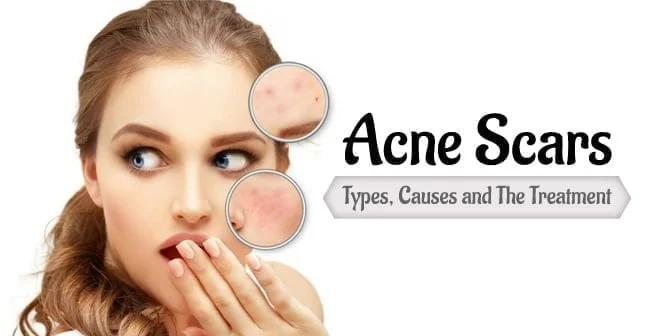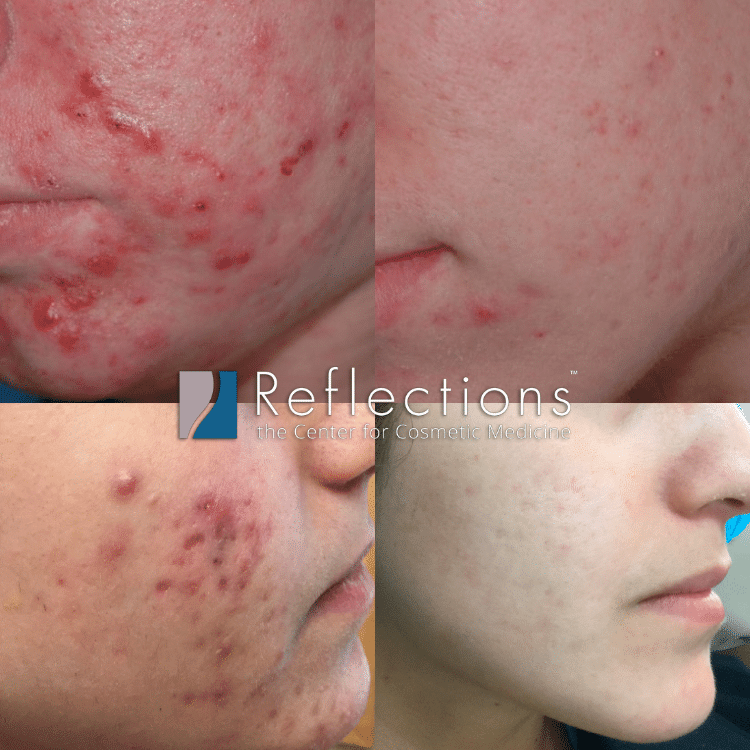Not known Facts About Acne Scars
Table of ContentsOur Acne Scars PDFsThe Facts About Acne Scars UncoveredThe 15-Second Trick For Acne Scars8 Simple Techniques For Acne ScarsAcne Scars Can Be Fun For Everyone
Increased acne scars occur when the body produces too much collagen and form a visible bump. As we age, acne marks come to be a lot more significantly since our skin loses collagen.A person hold-ups therapy for inflammatory acne. The longer you wait to seek treatment for acne, the greater the threat of scarring. An individual chooses at, squeezes or pops acne. When standing out an acne, you press germs deeper into pore. If we didn't require another reason that not to stand out an acne, understand that a scar might be the direct result of your activities.
Your hereditary makeup plays a big function in how much acne, and what kind of acne you might develop. As we claimed previously, there is no magic ingredient to take acne scars away in the blink of an eye. There are therapies available that help reduce the scarring with time.
, a skin doctor might lift the mark, bringing it closer to the surface area of the skin to make it less visible. Resurfacing gets rid of layers of the skin, which enables the body to generate brand-new skin cells.
Some Known Questions About Acne Scars.
Lasers and various other light therapies can deal with raised marks securely and effectively. (PDL) can help decrease the impulse and discomfort, lessen color, and squash a raised scar.
No unfavorable occasions were reported. After 3 needling treatments, there was renovation in the look of acne marks over time compared with the control group, with very little discomfort reported. Identifier: NCT00974870 Acne scarring has been connected with substantial psychological consequences. Therapy of acne scarring remains a restorative difficulty, with treatment techniques that include a series of possible options.
Nonablative and ablative lasers can be utilized to either eliminate or pierce skin in a fine pinpoint pattern, with resulting neocollagenesis; only a portion of the skin is treated with each treatment, and a series of treatments are required to treat the whole afflicted surface area. It has actually been recommended that neocollagenesis and renovation of acne marks can also be accomplished utilizing needle rollers, which utilize a mechanical, macroscopic approach to generate little epidermal and facial openings.
The 9-Minute Rule for Acne Scars
Like paint rollers, such gadgets can be moved back and forth along the skin. Needling as a possible treatment for acne scarring was presented by Camirand and Doucet, that defined usage of a tattoo gun to abrade acne marks.
At each of these gos to, needling was performed on the research study therapy location, and topical anesthetic was just massaged into the control location. Digital pictures and damaging occasions (eg, infection, prolonged erythema, long term edema, serosanguineous drainage, blood loss, ulcer, erosion, and pigmentation), including their duration, resolution, strength, relationship to the research treatment, and any kind of medicinal actions taken, were recorded before each therapy.

Pain degree was tape-recorded based on a 10-point visual analog scale after the treatment. Instantly after each treatment, mild manual pressure with gauze was made an application for 5 minutes to control identify blood loss and lotion secretion. The skin was soaked with saline swabs for an hour to promote hydration while the individuals were educated relating to the demand for home care.
Not known Details About Acne Scars
The gadget was after that additional cleansed by gas sterilization, kept in a closed bundle, and classified with the individual's name and Go Here the very first treatment date on the box till the following treatment. This sanitation procedure was followed to guarantee a high level of infection control in this study setting. The primary end result procedure was the quantitative global scarring grading system, created by Goodman and Baron.
Two blinded skin specialists (S.H. and M.P.) independently rated individuals' acne marks based on standard electronic photos obtained at standard and at the 3-month and 6-month follow-up gos to. Forced arrangement was utilized to find more information reconcile scores. Considered that this was a very early pilot trial, we considered it appropriate to take into consideration acne scars jointly, not individually, by numerous morphologic subtypes (eg, rolling, boxcar, ice pick, and so on).
and M.P.) did not join randomization or treatment and as a result were able to be blinded relating to task. Changes in mean scar ratings from baseline to 3 and 6 months, respectively, were computed for the therapy and control arms. Repeated-measures evaluation of variation with pairwise comparisons with Sidak change were done to check whether the scar score differed on treatment type, time, or the interaction between the 2.
The Wilcoxon signed rank examination was utilized to examine whether the distinction in overall acne scar appearance was connected with therapy type. The study occurred from November 30, 2009, with July 27, 2010. Twenty individuals consented, and 5 left before the initial review therapy. The remaining 15 completed all therapies and are analyzed.
Getting The Acne Scars To Work
At 3 months compared with standard, the decrease in scar rating in the needling team was nonsignificant (mean difference, 2.4, 95% CI, 0.01 to 4.8; P =.052) (Figure 3). The needling treatment was not especially agonizing. The mean pain ranking was 1.08 of 10. Discomfort rankings raised a little with time (P =.01), with week 4 discomfort rankings (mean, 1.75; 95% CI, 0.90-2.60) substantially greater than week 2 (mean, 0.78; 95% CI, 0.40-1.20) and week 0 (mean, 0.71; 95% CI, 0.40-1.00).
When asked to approximate the discomfort experienced throughout and in the days after their treatment, participants typically reported no discomfort (acne scars). Most individuals were really pleased with their procedure, responded indeed when asked if they would certainly do this procedure once again to treat added scars, and claimed they would certainly advise needling to their close friends
Mild transient erythema and edema, which were not categorized as damaging events and therefore not formally tracked, were consistently observed by the investigator (M.A.) and reported by participants after therapies. This research study reveals some renovation in acne marks after a series of 3 treatments of needling. There is a statistically substantial enhancement in such scars in the therapy group from baseline to 6 months and no substantial enhancement throughout this period in the control group.
